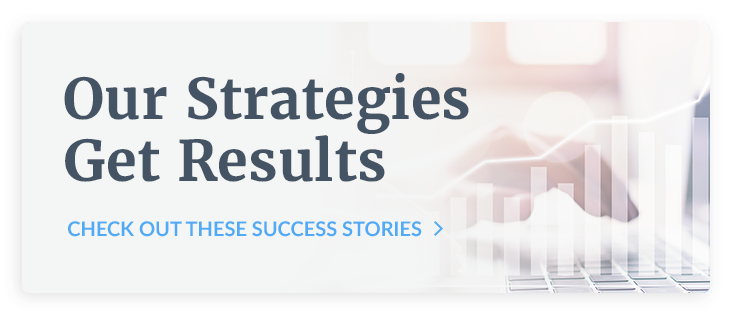
Marketing Strategy for Events: Get the Most Bang for Your Buck

Events, both in-person and virtual, have changed considerably in recent years. Virtual events in particular have come a long way from the flat, lackluster experiences we grew accustomed to before the pandemic. Today, you can find engaging and immersive panels, expos, webinars, courses and workshops that offer just as much educational value as in-person events — without the exorbitant travel costs. New virtual event tech makes it easy for professionals to learn and connect, creating tremendous revenue-generating opportunities for brands. Is your marketing strategy for events maximizing value? Are you getting the most bang for your buck?
As events have evolved, so have attendees’ expectations. Plus, with so many brands now hosting events virtually, it’s challenging to stand out from the competition. Putting on a captivating and memorable event requires more resources than before, often leaving less money for marketing and promotional efforts. And while you’ve likely always been judicious about allocating your promotional spend, you now have to stretch funds even further.
Fortunately, there are numerous ways to get more bang for your buck. To ensure every dime counts, follow these steps when planning your marketing strategy for events.
Understand Your Target Audience
Before sending a single promotional email, make sure you’ve clearly identified your ideal attendees. Chat with anyone involved in event content development to determine who they’ve designed their experiences for, and ask your sales and marketing leaders who they’d like to see. And if their answers are vague, push them to get more granular. For example, ‘B2B tech decision-makers’ is too broad, but ‘Mid-to-senior level technology professionals at enterprise-sized organizations’ is something you can build a campaign around.
Gather data around your target audience’s age range, geography and education level, and insight into their pain points, challenges, goals and interests. The better you understand who these people are, the easier it will be to identify where they spend time, what motivates them, and how they consume media on and offline.
Define Your Goals
What do you want to achieve?
When it comes to building a budget-friendly marketing strategy for events, that can be a loaded question. Of course, every event marketing pro wants to increase event attendance and, inevitably, long-term revenue for the business. But what specific goals can you set for your efforts?
For example, a medical device company hosting an event for private practice physicians might hope to reach more physicians within a specific geographic area or specialty. Or maybe the organization wants to register more mid-funnel prospects to move them further along in the buyers’ journey.
Understanding these objectives will help you laser-focus your media budget so you aren’t spending money on achieving lower-priority outcomes. It also enables you to tailor your message so it's more likely to stand out from the noise.
As an example of these points in action, we recently worked with a client in the software services sector, promoting their attendance at a major trade show. With a clearly-defined target audience, we executed pre-promotion Google ads, as well as Facebook targeting custom audiences a month in advance of the event. We then initiated geofenced Google display and Facebook advertising around the site of the event. The ads pointed to a landing page with event information as well as info about our client.
The results of this precision campaign were clear: over 4,400 page views from the pre-promotion efforts with an average time on page over four minutes. The geotargeted ads garnered nearly 200 page views, with the average user spending over two minutes on the landing page. Getting intentional gets results!
Get Creative with Channels and Tactics
Working with less isn’t optimal, but there is one silver lining: it forces you to think outside the box, leading you to explore more creative channels, platforms and tactics you might otherwise ignore. And that can lead you into new relationships and less-saturated spaces.
For example, consider reaching out to niche podcasts, industry newsletters and blogs, or relevant business influencers. Just make sure the audience you’re targeting is highly active in the places where you’re spending, and don’t be afraid to ask for recent audience demographics and engagement data to prove it.
And if you have the budget to spend on bigger ad buys, ensure you take full advantage of your package or negotiate additional benefits. For example, if you’re doing a digital media buy in a prominent publication, they may also be willing to publish and promote a thought leadership article ahead of your event.
Leverage “Free” Platforms
Technically nothing in the business world is free: everything requires at least some resources. But whenever you put together a marketing strategy for events, consider ways to utilize internal resources that won’t drain your budget.
For example, make sure you’re promoting your event via your company blog, email lists and social media accounts, and mention upcoming virtual events during other events. For example, you might promote your upcoming summit or masterclass on a webinar. And if anyone in your organization has a speaking engagement, podcast interview or another public appearance coming up, ask them to plug the event there, too.
Encourage Attendees, Speakers, and Sponsors to Spread the Word
Your attendees and speakers represent another excellent (and often untapped) resource for maximizing exposure without exhausting your budget — and the sooner you activate them, the better your reach.
Ask confirmed attendees to post about the event on social media (and tag your company) or invite friends and colleagues in the weeks beforehand. Offer attendees a compelling incentive to share the event, like entry into a contest to win a free upgrade to VIP experiences, a gift card, or another enticing prize.
Be sure to announce speakers and sponsors on social media, and encourage them to share announcements with their audiences. If you’re hosting a large virtual event, like a multi-day conference, consider creating content (like videos and podcasts) with a speaker or sponsor spokesperson to help promote your event and offer a glimpse of the sort of content prospective attendees can expect.
Hire an Agency to Help
Creating relevant content, identifying promotional opportunities, building personalized campaigns, and creating a robust strategy is a lot of work, especially if you don’t have a dedicated street team in-house. And asking in-house marketing teams to ramp up content creation, SEO and promotional work isn’t always possible.
This is where an inbound marketing agency can make the biggest difference. By hiring an experienced agency to help support your events and boost other marketing outcomes, you can maximize your budget and ensure you don’t leave any opportunities on the table. Because while creating a marketing strategy for events can be labor-intensive, it’s the best way to ensure you yield the best return for your spend and smash your goals.




